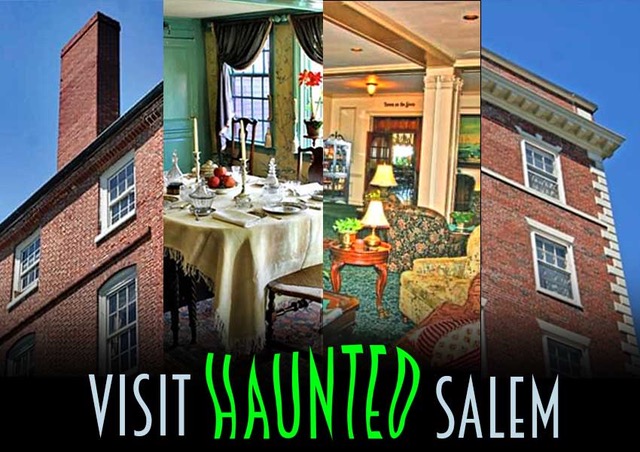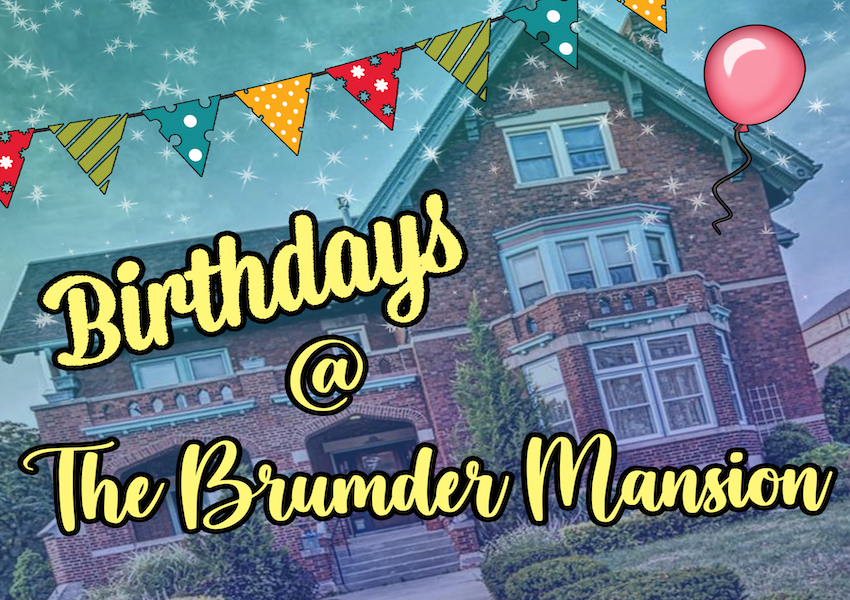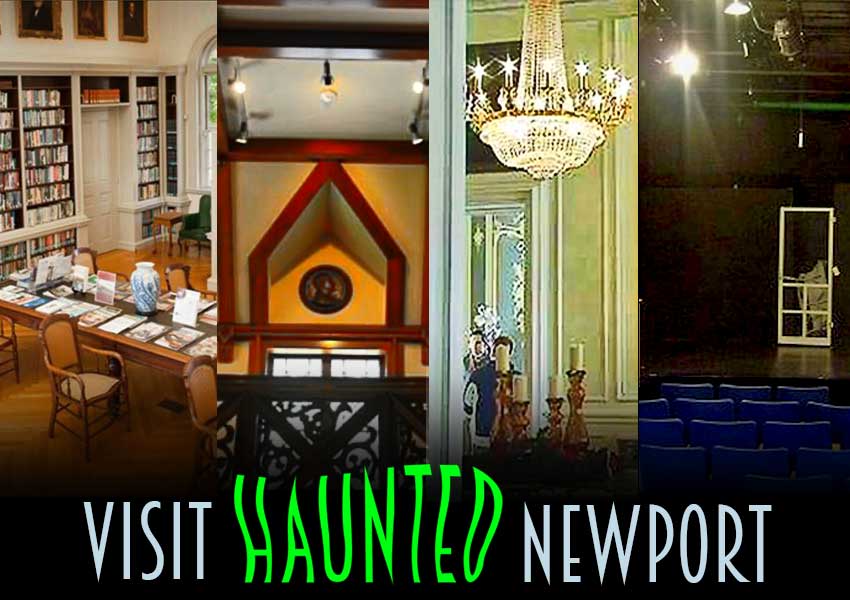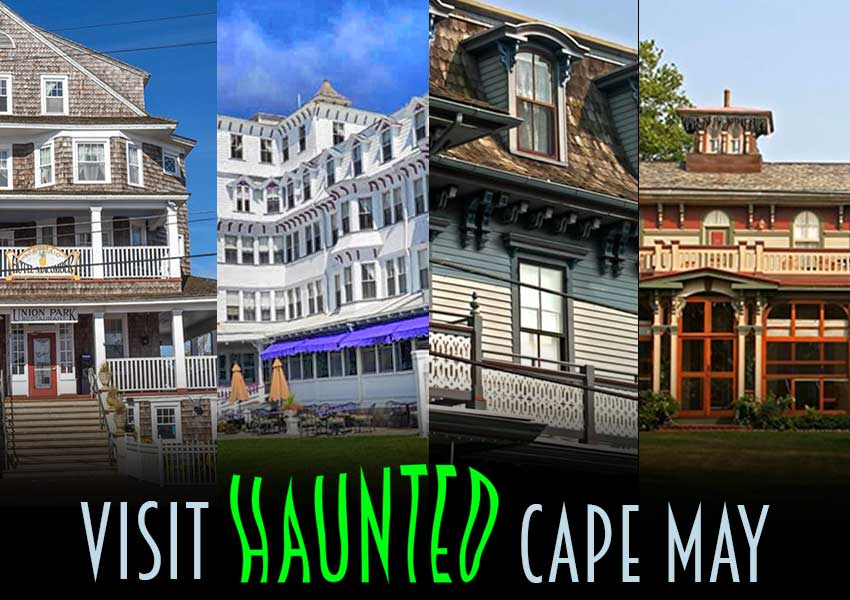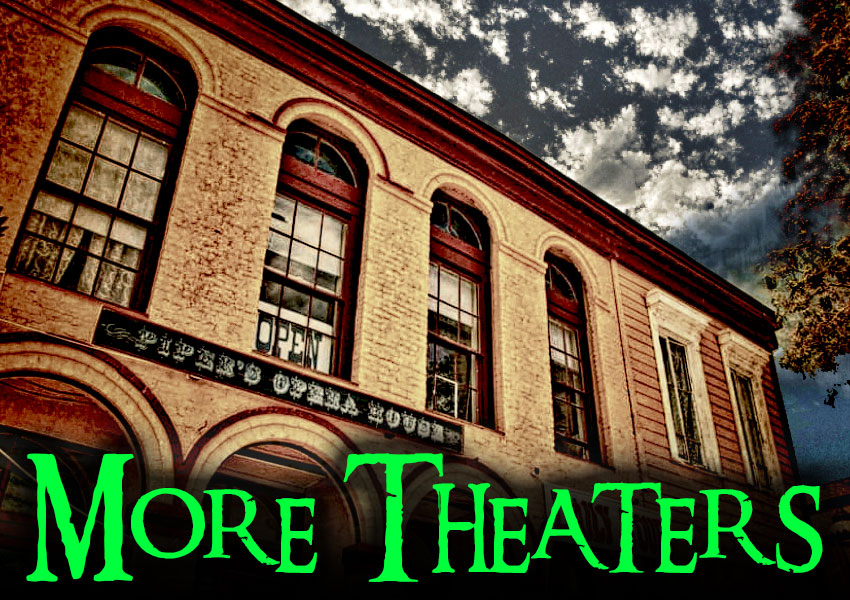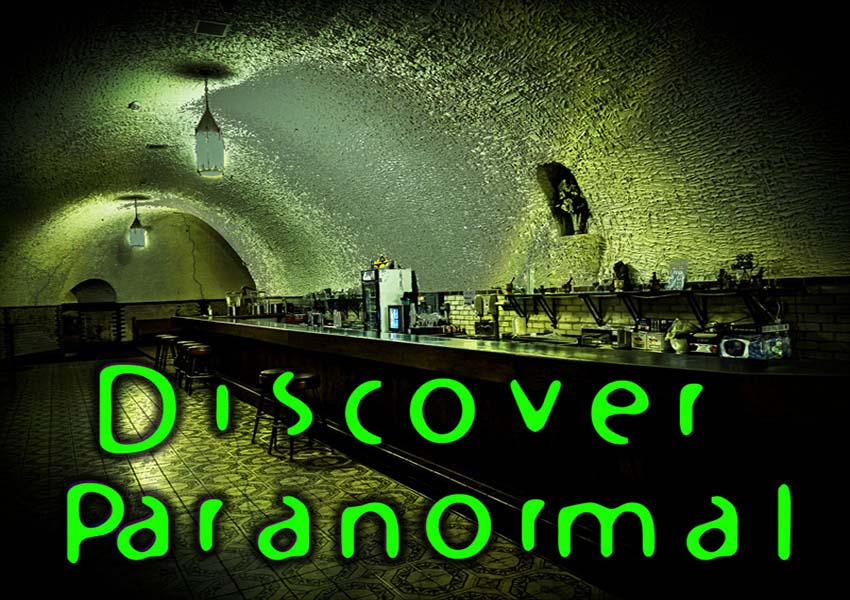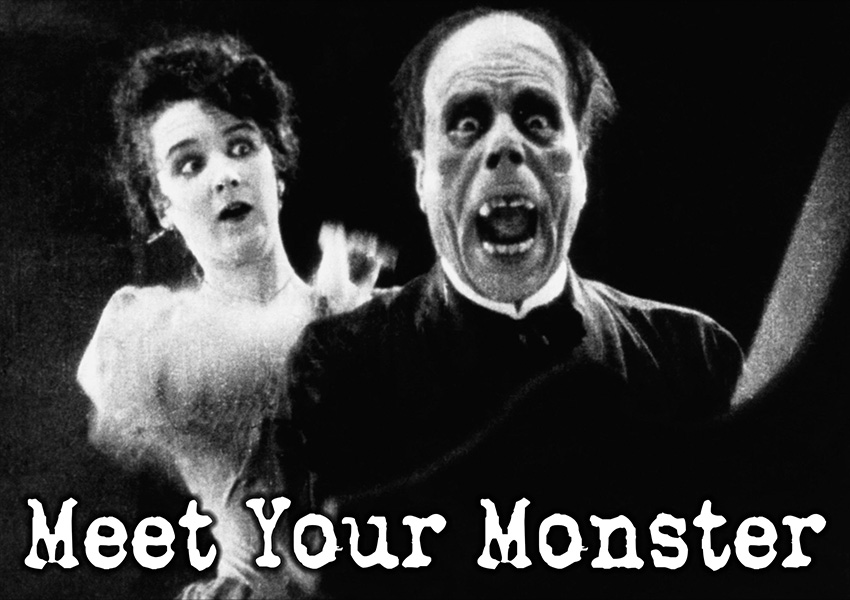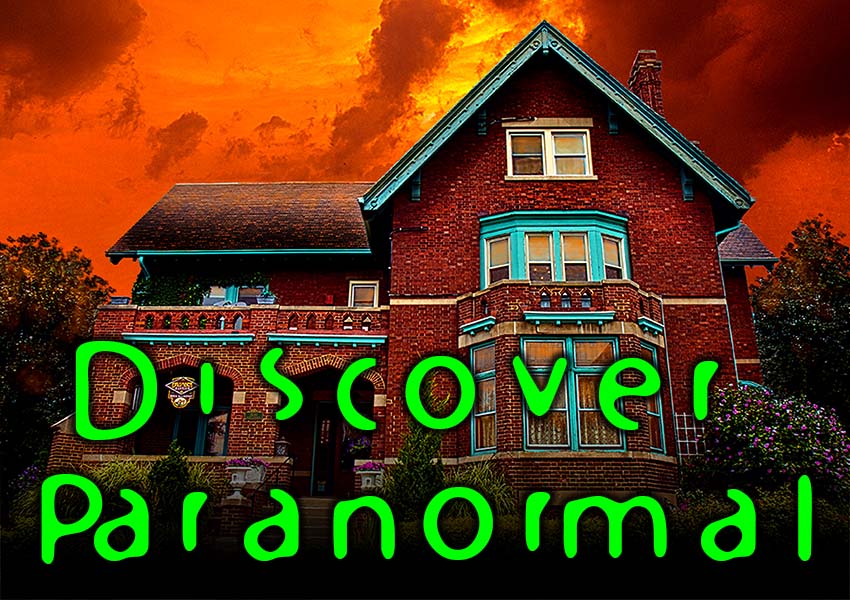Syracuse New York
Syracuse Theatre
Unintentional tragic deaths or emotional angst have caused hauntings.
Some unpaid spectral volunteers jump right in to help!
DESCRIPTION
 Wow! What a gorgeous example of the 1920s style extravagant show-case theatre, that was a magnificent venue to go and see first the silent films, then the talkies. Though it no longer has some of the original finery, such as the magnificent organ, or the beautiful chandelier that once hung in the lobby, it is well on its way to being restored. The fabulous tapestries, the red and gold decor, and intricate details are still a marvel to behold. To see some of the beautiful decor inside this grand dame of a theatre, check out their facebook page. facebook.com/Landmarktheatre
Wow! What a gorgeous example of the 1920s style extravagant show-case theatre, that was a magnificent venue to go and see first the silent films, then the talkies. Though it no longer has some of the original finery, such as the magnificent organ, or the beautiful chandelier that once hung in the lobby, it is well on its way to being restored. The fabulous tapestries, the red and gold decor, and intricate details are still a marvel to behold. To see some of the beautiful decor inside this grand dame of a theatre, check out their facebook page. facebook.com/Landmarktheatre
The Landmark makes its financial ends meet by renting out the theatre to a variety of events and activities, including main stage shows, weddings and receptions, meetings, proms, corporate parties, fund raisers, and more.
On November 11th, 2011, The Landmark Theatre is having a grand opening, celebrating the completion of 16 million dollar stage expansion and renovation project, enabling them to host larger shows like “The Lion King,” which will enrich the community, and bring in more money for upkeep and improvements. This party should be a great event. Tickets are running 150 dollars a piece, but includes a tour, and great food.
HISTORY
 During the 1920s, Salinas Street used to be Syracuse’s theatre district, offering such fine theatres as The Empire, The Strand, Keith’s, Temple (later Paramount) Theatre and Eckel Theatre, that all showed films/and perhaps produced stage shows as well. A fellow by the name of Marcus Loew came to town and wanted to buy The Empire, but the deal fell through. So, he did the next best thing, and bought some property on the northwest corner of Salinas Street, on which the Jefferson Hotel and some commercial shops were located. For the price of $1.9 million, Loew bought the property on March 16th, 1926, and started the process of tearing down the old buildings, to build the city of Syracuse’s largest theatre, with 3,000 seats, as well as an eight story office tower.
During the 1920s, Salinas Street used to be Syracuse’s theatre district, offering such fine theatres as The Empire, The Strand, Keith’s, Temple (later Paramount) Theatre and Eckel Theatre, that all showed films/and perhaps produced stage shows as well. A fellow by the name of Marcus Loew came to town and wanted to buy The Empire, but the deal fell through. So, he did the next best thing, and bought some property on the northwest corner of Salinas Street, on which the Jefferson Hotel and some commercial shops were located. For the price of $1.9 million, Loew bought the property on March 16th, 1926, and started the process of tearing down the old buildings, to build the city of Syracuse’s largest theatre, with 3,000 seats, as well as an eight story office tower.
Marcus Loew hired the same architect who had designed The Strand, Temple, and Keith’s, Thomas Lamb, to make the plans for Loew’s most awesome, spectacular theatre and office space in Syracuse. About a year later, on March 15th, 1927, the construction began. The construction of Loew’s State Theatre, employing more than 300 workers and craftsmen wound up costing $1.4 million, and took eleven months and three days to complete.
Wow! Loew’s State Theatre surely did live up to its advertising, becoming “the last word in theatrical ornateness and luxuriousness.” The main lobby had a glorious chandelier, by Louis Tiffany, that was originally designed for Cornelius Vanderbilt’s mansion. It provided light so the people could see the huge, most grandest mural of this building in the lobby area. Other murals, along with marble, terrazzo, tapestries, filigrial chandeliers, and exotic furnishings, were most impressive to all. Over the front doors of this theatre, there was The Musician’s Gallery, from where during intermission, quartets of musicians provided music for theatre patrons.
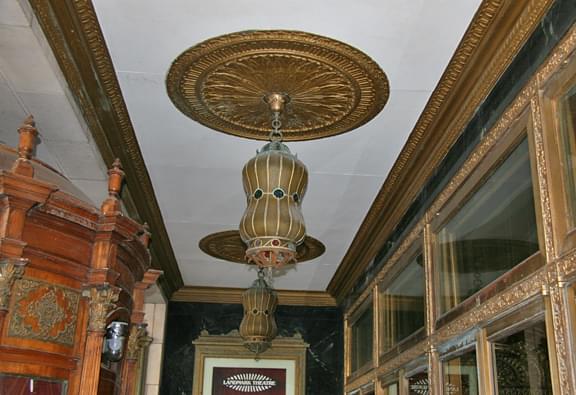 After going up the grand staircase to reach the promenade lobby, the theatre patron would find a fishpond with a Japanese pagoda fountain. The theatre auditorium itself was gloriously decored with rich reds and golds, and “accented with wall ornaments” throughout this venue.
After going up the grand staircase to reach the promenade lobby, the theatre patron would find a fishpond with a Japanese pagoda fountain. The theatre auditorium itself was gloriously decored with rich reds and golds, and “accented with wall ornaments” throughout this venue.
And, of course only the grandest organ would do, to play the music for the silent movies. Loew bought a 1,400-pipe Wurlitzer organ, that offered a variety of sound affects, besides the usual musical sounds that come from an organ. Patron of the silent movies were entertained with the sounds of a glockenspiel, marimba, bird whistles, hoof beats and surf sounds.
Besides pouring money into the theatre itself, everything else, including the people who represented the theatre, was all first class quality. Employees were smartly dressed, did their jobs well and got a pretty good salary too, I imagine. All the bells and whistles of having a top-notch staff were front and center for the patrons to see, feeling important and very impressed. A uniformed doorman or “barker” greeted patrons, three cashiers staffed the outdoor box office kiosk. Not only did they have uniformed ushers, actually directing people from the lines to their seats, but also had uniformed captains to oversee the ushers. The candy girls were also well-dressed as they worked behind the food counter.
Though the Loew’s State Theatre was primarily a movie venue, they also had their own in-house carpenter shop to not only help with the upkeep of the building, but also provide signs, and stage props for small stage events.
Loew’s State Theatre had no trouble switching to sound movies, known as “talkies.” On March 30th, 1929, “The Broadway Melody” was proudly shown to the community of patrons.
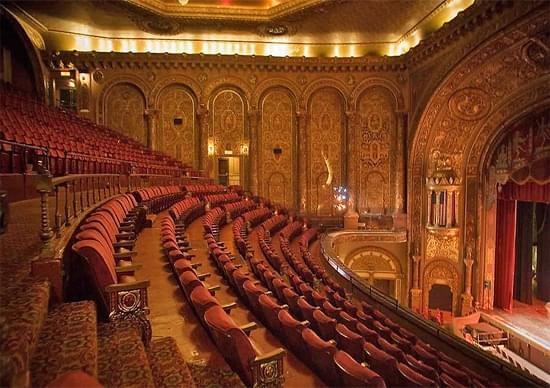 This theatre and its culture of high class and high quality, supported by a generous budget, continued on throughout the depression, bringing the people not only entertainment, but a nice escape from the troubles of life. In 1933, they provided for their patrons a public demonstration of the new media, television. In 1934, they started to show double features at the price of one ticket, instead of just one.
This theatre and its culture of high class and high quality, supported by a generous budget, continued on throughout the depression, bringing the people not only entertainment, but a nice escape from the troubles of life. In 1933, they provided for their patrons a public demonstration of the new media, television. In 1934, they started to show double features at the price of one ticket, instead of just one.
During World War II, The Loew’s State Theatre did its part for the war effort, showing not only Hollywood war films, but the movie news reels, of our troops. Patrons would eagerly look for loved ones in uniform. During intermission, the theatre would sell war bonds.
After the war, things changed for Loew’s State Theatre. Taxes and labor costs shot up, making it harder to draw people inside with higher priced tickets needed to cover the costs. Because Loew’s State Theatre was then seen as being not as profitable, and an investment that had seen better days, The parent company of the Loew’s State Theatre diversified their capital into more profitable ventures, cutting way back on the budget for this grand old dame mainly in staffing, maintenance, and systems upgrading. Uh oh! Considering it cost 1.4 million dollars to build back in 1927, it must have needed a large chunk of change to keep it all up to snuff. This began the theatre’s downhill slide. Perhaps a date with the wrecking ball further down the road was planned, when the time was right.
When non-essential mechanical devices failed, they weren’t repaired. No upkeep for all the decorative fabrics, walls, carpeting, and seating was in the budget. All that was in the past “fastidiously maintained”, slipped into shabbiness, encouraging vandalism.
Even the grand organ wasn’t properly maintained. When it stopped working in 1954, just in need of replacement and maintenance, it was allowed to sit for 10 years, silent and dusty. In 1964, this grandest of organs was sold to Stanford University, and was taken apart and shipped to Palo Alto, and put back together in a repaired state in the Stanford Theatre, where it was loved and appreciated. The parent company of The Loew’s State Theatre was waiting for time to pass, so they could eventually sell off the valuable items in the Loew’s State Theatre and tear it down, so something more profitable could be built in its spot.
 Three years later, when the Keith’s and Paramount Theaters were being torn down to make way for retail stores, the parent company of The Loew’s State Theatre announced that they too planned to close the theatre and tear it down as well. They met unexpected resistance from the community. Though city officials and preservation enthusiasts came together to temporarily stop the theatre’s demise, the county wouldn’t come on board with any funds to help buy the building.
Three years later, when the Keith’s and Paramount Theaters were being torn down to make way for retail stores, the parent company of The Loew’s State Theatre announced that they too planned to close the theatre and tear it down as well. They met unexpected resistance from the community. Though city officials and preservation enthusiasts came together to temporarily stop the theatre’s demise, the county wouldn’t come on board with any funds to help buy the building.
So the city officials offered the current, frustrated owners a sweeter tax assessment in exchange for a pledge to keep operating the huge theatre. The owners didn’t increase the theatre’s budget, and showed b movies and exploitation films of low-brow quality, offering poor entertainment. Don’t think that their heart was in it, shaming this once wonderful venue.
The parent company tried again to close it and tear it down, in the mid 1970s but again some determined folks got in their way. On May 21, 1975, the “Citizen’s Committee to Save Loew’s” was formed, a day before the theatre closed again. In June, of ’75, the Vanderbilt chandelier was sold. On July 9th, the Syracuse Area Landmark Theatre (SALT) was formed, to find the funds to buy and save the theatre. After more tax relief was offered for the owners, the theatre reopened yet again on July 14, 1975. Seeing a possible buyer in the near future, the owners were willing to wait and see.
 In May of 1976, SALT got to work, and the US Dept. of the Interior listed The Loew State Theatre building in the National Register of Historic Places, which discouraged the threat of the wrecking ball, and makes SALT eligible for federal restoration funds. YES! Things were looking up for the theatre’s future, but they weren’t out of the woods yet.
In May of 1976, SALT got to work, and the US Dept. of the Interior listed The Loew State Theatre building in the National Register of Historic Places, which discouraged the threat of the wrecking ball, and makes SALT eligible for federal restoration funds. YES! Things were looking up for the theatre’s future, but they weren’t out of the woods yet.
In August of 1977, a deal was worked out. Sutton Real Estate kept ownership of the office building. SALT agreed to buy the Theatre for $65,000; a deal conditional on raising the funds in just ninety days by the end of the year. Volunteers intensified fund-raising and began emergency repairs to allow reopening, which was no small feat. The highlight of the fund raising effort was a sold-out benefit concert with Harry Chapin. The total of all their efforts in 90 days was only 30,000 dollars. However, with 55 days to spare, on November 5th, The State Office of Parks and Recreation, generously gave SALT a matching grant of up to $35,000. The cherry on top was the five thousand dollar donation from The National Endowment of the Arts for “architectural feasibility studies”.
Finally on June 29, 1979, The deed title was transferred over to SALT, and the long road back to stabilization had finally begun. SALT has done a fine job over the years improving the building, now called The Landmark Theatre, while at the same time offering a variety of fine arts/film events, and gaining financial support from the business community as well. On November 11th, 2011, The Landmark Theatre is having a grand opening, celebrating an exciting achievement; the completion of 16 million dollar stage expansion and renovation project. This larger stage will be able to host larger shows like “The Lion King,” that will enrich the community, and bring in more money for upkeep and improvements. This party should be a great event. Tickets are running 150 dollars a piece, but include a tour, and great food.
HISTORY OF MANIFESTATIONS
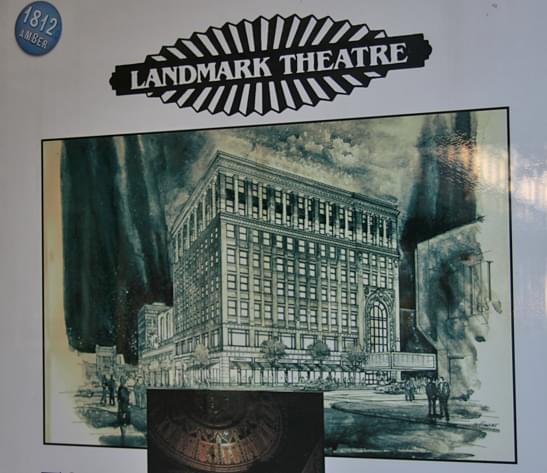 Unintentional tragic deaths from accidents or emotional angst that happen in theatres, often are the cause of entities coming to stay in theatre buildings. Many artists/theatre staff take their professionalism very seriously. Some have a tremendous work ethic, and if they die before performing, they still long to do so after they die. Others are profoundly disappointed in their death or missed performance, and long to do it, finish the gig or job, and/or still be involved.
Unintentional tragic deaths from accidents or emotional angst that happen in theatres, often are the cause of entities coming to stay in theatre buildings. Many artists/theatre staff take their professionalism very seriously. Some have a tremendous work ethic, and if they die before performing, they still long to do so after they die. Others are profoundly disappointed in their death or missed performance, and long to do it, finish the gig or job, and/or still be involved.
Oscar was a stage hand who suffered a death by electrocution in an accident on stage because of a faulty Westinghouse generator. Female entity-Clarissa was an actress. There are two versions as to how she fell from the balcony One Version: Clarissa was in the balcony when she witnessed her beloved Oscar getting electrocuted. She fainted and fell over the railing to her death. Death by emotional angst — Suicides of staff, actors/actresses because of work or personal disappointments can also cause entities to stick around.
Second version: Clarissa failed to get the part in a play, and she threw herself over the rail. The problem with this story, is that the original stage of Loew’s State Theatre was built for small events, not big theatrical productions, because it was basically a movie theater. However, perhaps they did radio theater too. This scenario may be possible as well. Theatre Employees/owners can be so loyal that after they die, they stick around to help.
Charlie was the caretaker, janitor who lived in the boiler room, near the central vac system, during the rocky 1970s. He died of natural causes in the theatre.
General Activity
Strange blue light, photographic anomalies, as well as EVPs have been captured as evidence in the theatre.
All three entities are represented by these manifestations.
Other haunted areas in the theatre are the very back of the auditorium, the Red Room; the Walnut Room; and the very large basement called the catacombs.
Clarissa the Actress
Makes her presence known by the aroma of Lilacs.
For chuckles and attention, she likes to appear in front of the living, at the “most unexpected times.”
One of these times was in front of the staff. They spied a woman, up in the balcony. Her apparition was so life-like, the staff had thought that she was a live person.
When they got close enough to try to tell her to leave, she vanished before their eyes. The Landmark Theatre seems to have some unpaid volunteers from the spirit world, willing to do their part to help.
Oscar Rau
Previously a stage hand. His apparition has been seen on stage, going about his business of doing his various tasks/duties. He likes to putter around the theatre’s large lighting board back stage.
A Man Named Charlie
His apparition has been seen around the areas he was in charge of while alive, dressed in 70s clothes. He is probably also protective of the theatre, as he was while alive, helping to keep out intruders.
STILL HAUNTED?
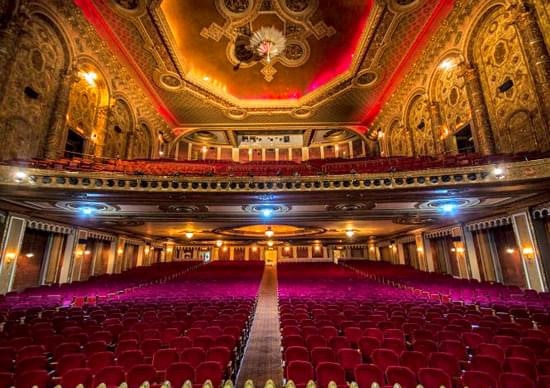 A big YES INDEED is in order! Central New York Ghost Hunters, have caught a lot of hard evidence, pointing to the theatre’s spirit residents. Every time they investigate the theatre, they get more evidence from these friendly spirits.
A big YES INDEED is in order! Central New York Ghost Hunters, have caught a lot of hard evidence, pointing to the theatre’s spirit residents. Every time they investigate the theatre, they get more evidence from these friendly spirits.
They lead the annual ghost hunt in October, which is a fundraiser for the theatre. All the money raised by the ghost hunts goes toward the ongoing restoration projects of The Landmark Theatre.
Central New York Ghost Hunters have had a lot good luck capturing paranormal evidence. Their EVPs suggest that Clarissa’s fall from the balcony wasn’t planned, but a tragic accident. They have shared this news on their website. There was a time when things were quiet, back in 2005, but because of all the restoration of the theatre, the spirits have become more active once again. Other paranormal groups have also investigated the theatre, and haven’t been disappointed.
LOCATION
362 South Salina Street
Syracuse, New York
(315) 475-7980
The Landmark Theatre can be found in the old downtown section of Syracuse, on the corner of South Salina Street, and West Jefferson Street.
SOURCES INCLUDE
- “Haunted New York: Ghosts and Strange Phenomena of the Empire State” by Cheri Revai
Stackpole Books, 2005 - lite987.com
- landmarktheatre.org
- facebook.com/Landmarktheatre
- paranormal.about.com
Our Haunted Paranormal Stories are Written by Julie Carr
Our Photos are copyrighted by Tom Carr
Visit the memorable… Milwaukee Haunted Hotel

